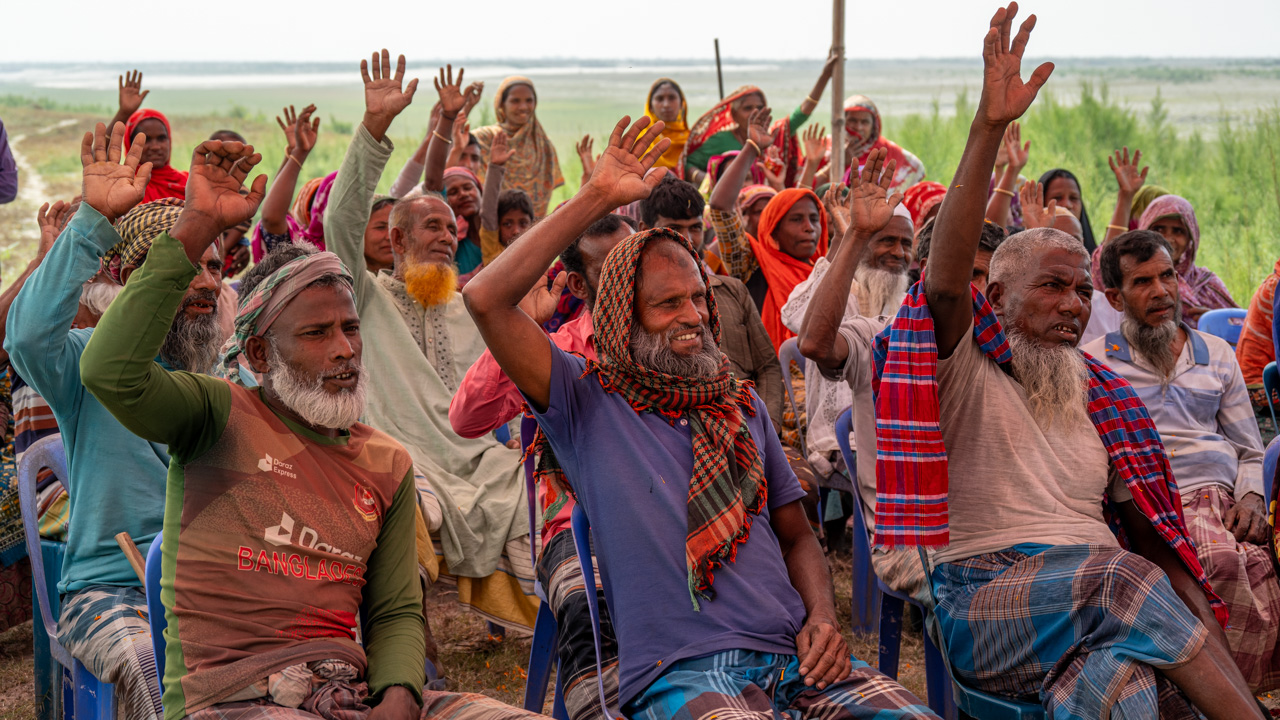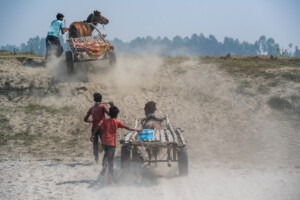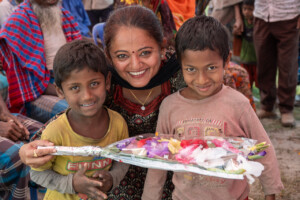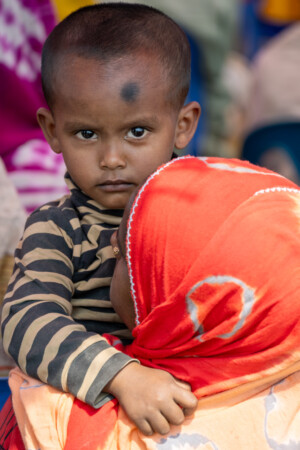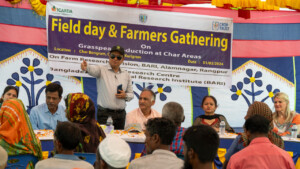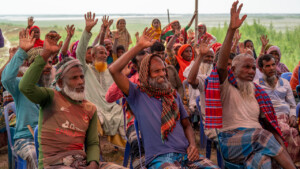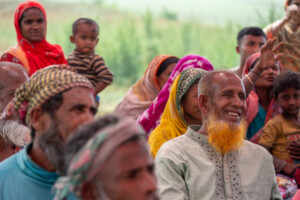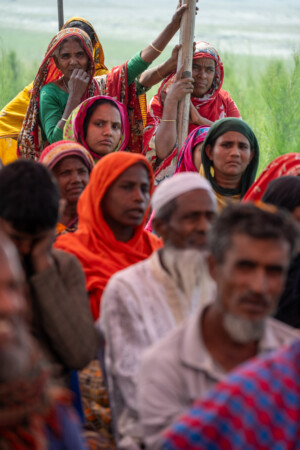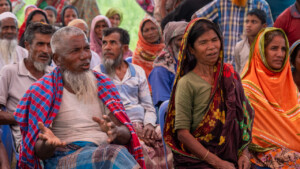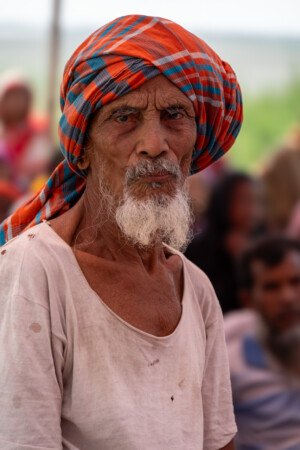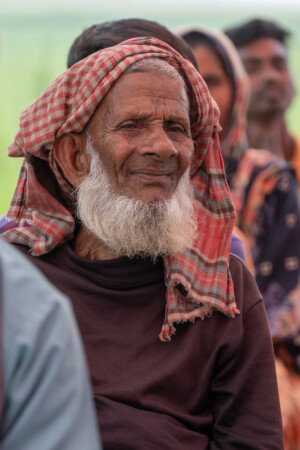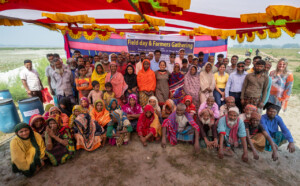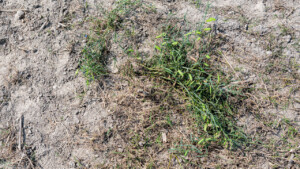As I jumped off the horse cart and landed on the sandy soil of Charbongram, an island in the Brahmaputra River in Bangladesh, I kicked what appeared to be a weed. It was a scraggly, prostrate plant somehow surviving where no other plants could.
‘That’s grasspea,’ said ICARDA pulses breeder Shiv Agrawal proudly as if showing off his children. ‘The locals just broadcast the seed and come back 100 days or so later and harvest the pods. Absolutely no inputs.’
I looked around the char, a sand and silt island, and could see it growing everywhere. Grassy weeds couldn’t even survive … but grasspea (‘Lathyrus sativus’) thrived. And that same grasspea would provide the people of the char a tasty food source high in protein.
Our local partner, Akm Alam Liton, invited the people of the char to a farmer field day so scientists from the Bangladesh Agricultural Research Institute (BARI), the International Center for Agricultural Research in the Dry Areas (ICARDA) and the Crop Trust could hear them out and assess what their needs and preferences are.
The farmers expressed a preference for black gram due to its higher market value, but in terms of a hardy, nutritious and tasty crop that required low inputs and investment they all agreed that you can’t beat grasspea.
We sat down for an in-depth chat with one of the leading farmers. We asked him to address the stigma of grasspea that was impeding its adoption worldwide – that a toxin called ODAP in the plant could cause neurological problems. ‘Not an issue for us,’ he said. ‘All we have seen are positive benefits’.
I strolled through a verdant patch of grasspea growing next to our gathering. As part of a Crop Trust-sponsored project, the team from BARI planted a demonstration plot to promote the selected variety BARI Kesari-3. I sat down in a sea of green in an otherwise desolate island to have a closer look at grasspea’s small purple flowers. And I realised this supercrop is not only hardy, nutritious and tasty but it also likes to be a bit of a showoff and calls out for attention with the prettiest little flowers.
The stigma of grasspea’s sinister quality of causing paralysis if eaten in large quantities was lost amongst the people of Charbongram. They made it loud and clear to the visiting scientists … they wanted more and better varieties of grasspea.
All images used on this page were photographed by Michael Major for the Crop Trust and used here under a CC BY-NC-ND 2.0 license.

